TechRadar Verdict
The Poco F4 GT combines top-notch performance with a 120hz AMOLED screen, for a first-class gaming experience, all thanks to its fantastic analog triggers. The price is great, but you wouldn’t buy this phone for its camera and there is no waterproof certification. For what it costs, in any case, it's worth it.
Pros
- +
Gaming trigger with an ingenious design
- +
120W charging with charger in the box
- +
L-shaped charging cable
Cons
- -
Auto brightness is whimsical
- -
Disappointing camera
- -
Analog triggers are of little use aside from gaming
Why you can trust TechRadar
One-minute review
With the brand new F4 GT, Poco attempts a qualitative leap and introduces a “true” top of the range device. In fact, this smartphone has many of the features that distinguish a flagship: Qualcomm Snapdragon 8 Gen 1 processor, ultra-fast memory, 12GB of RAM, a 120 Hz AMOLED screen and 120 watt fast charge (with the charger in the box).
It lacks a camera that lives up to the rest, and from this point of view, the Poco F4 GT is ordinary at best. Also, the microSD slot is also missing.
On the other hand, there are two dorsal triggers designed for gaming, made with a magnetic mechanism that is nothing short of brilliant. The Poco F4 GT, while not having the aggressive design of the usual gaming smartphones , is perfectly capable of letting you play at the highest level at all times.
We would have appreciated a battery that lasted a little longer, but in most cases you can count on a full day of battery life. And if not, the 120W fast charging can fill the battery in just over 15 minutes, which is frankly fantastic.
Price and availability
The Poco F4 GT was announced on April 26, 2022, and as of yesterday is available on the official Poco shop and major retailers in the region. On our side of the world, the Poco F4 GT is available in Stealth Black, Knight Silver and Cyber Yellow via Amazon and Noon for Dh2,249. Unfortunately, the cheaper 8GB variant of the device will not be available here.
Design and build
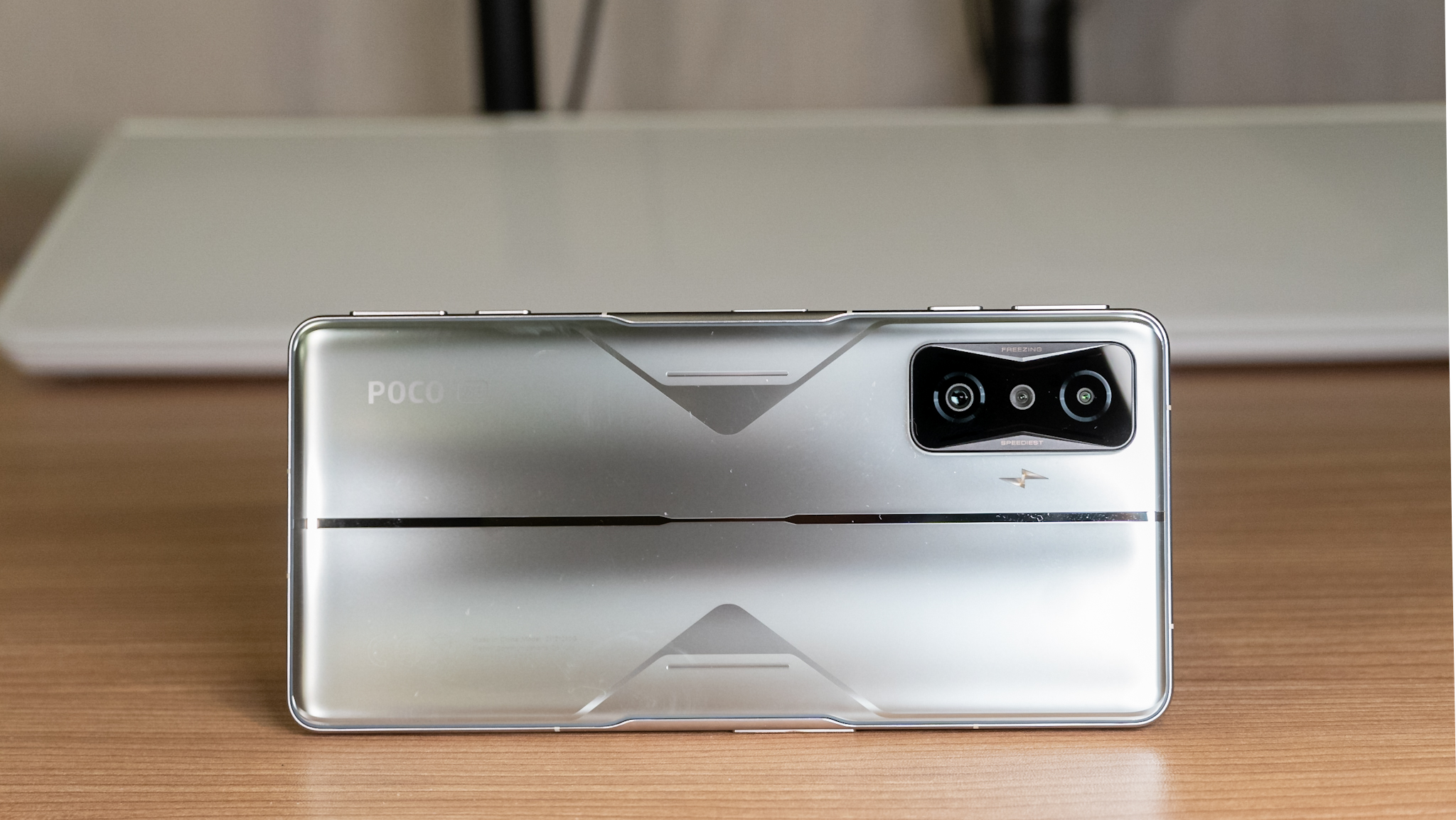
With a 6.67 ”screen, the Poco F4 GT is a rather large smartphone. The thickness is 8.5 mm, so it is certainly not the thinnest model out there, and the weight is also significant, 210 grams. In short, it is a large smartphone, certainly not easy to use with one hand. The finish is at least not slippery, which helps if you want to use it without a case.
Poco did a nice job of reducing the bezels around the screen, and the AMOLED panel is pretty much the absolute star, apart from the small hole for the front camera.
All around we have a flat edge, which we’re glad to see and hope to see more from smartphones. We did notice the lack of a flush transition between the glass and metal on the sides of the phone. It isn’t a deal breaker but maybe something Poco can take note of for next time.
Looking at the metal frame, you notice that the plastic breaks are different, compared to most other smartphones. There are in fact more gray "dashes", and in different positions. This is because Poco has designed the F4 GT for gaming, so to be used horizontally. And to ensure that reception is always ideal, they have also added antennas. That being said, we can't say we've noticed any major differences, during our review of the device.
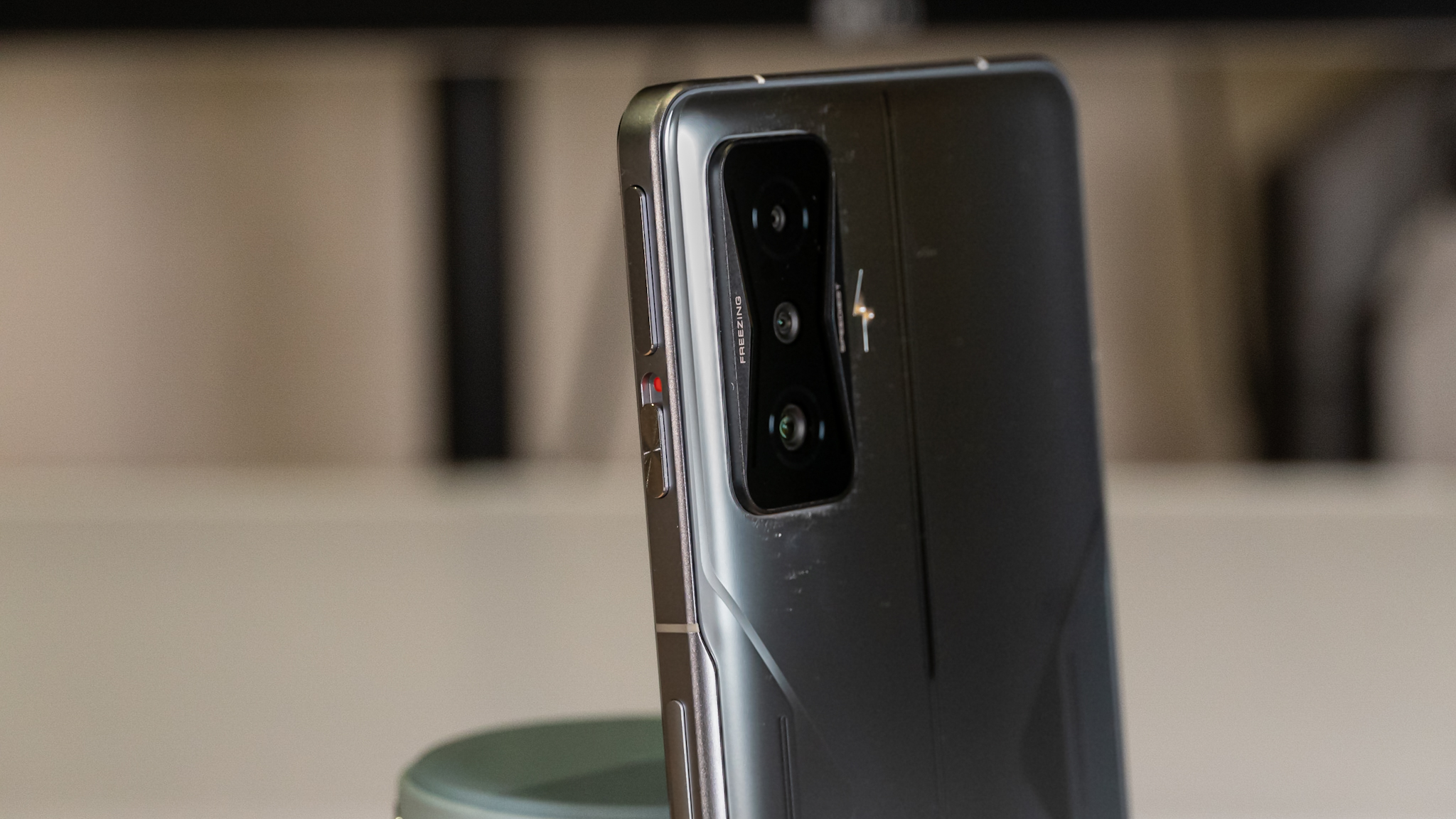
The right side is particularly interesting: here we find the power button, which integrates a fingerprint sensor. But what’s most interesting are the triggers, for gaming sessions. The brilliant thing is that they are physical keys, held in place by a magnetic lock. Once unlocked, they spit out of the phone about a millimetre, and are responsive and very comfortable buttons. They also appear solid, although it is difficult to estimate the long-term durability of such a solution.
To play, first of all the action area of each trigger must be configured: here you will have to move the indicator on the screen. For example, we can place the right on the button to shoot, and the left on the control to switch weapons - or something like that in other games. Then, instead of using your fingers to trigger those commands, you use analog triggers. The answer is as quick as using the screen, and it has the advantage of not covering the playing area with your hands.
The analog triggers, then, can also be used for other actions, but here Poco could do something better. For example, you can use an analog trigger to launch the Camera app, and you can set the video mode. However, it is not possible to take a photo or actually record a video, except by touching the screen. A somewhat absurd choice, in our opinion. Something we’re sure can be activated through a software update, so let’s get that going Poco?
Poco F4 GT also has an audio system with 4 speakers, two tweeters and two woofers, organised in two groups. The maximum volume is very loud, the sound is clean, and the audio spectrum is relatively wide (for a phone). Indeed, sometimes it is even too high, and if you forget to lower it, the notifications will certainly annoy the people around. Overall, the Poco F4 GT offers a better audio experience than most other smartphones.
Below is the USB-C connector, while on the left you can see the drawer for the SIM and an extra microphone. The latter is also a detail designed for gaming, and which facilitates voice chats (or normal hands-free calls) when holding the smartphone horizontally.
Speaking of the SIM drawer, Poco F4 GT is a dual SIM smartphone with DSDA mode, i.e. dual SIM dual Active. It means that both SIMs are always active, so it will be possible to talk and navigate with both, or with the one that interests us at any time, without worries or complex steps.
The Poco F4 GT has no 3.5mm jack socket, nor are there any headphones in the box. However, there is a USB-C to 3.5mm adapter, which isn't a bad solution for those who want to continue using their wired headphones.
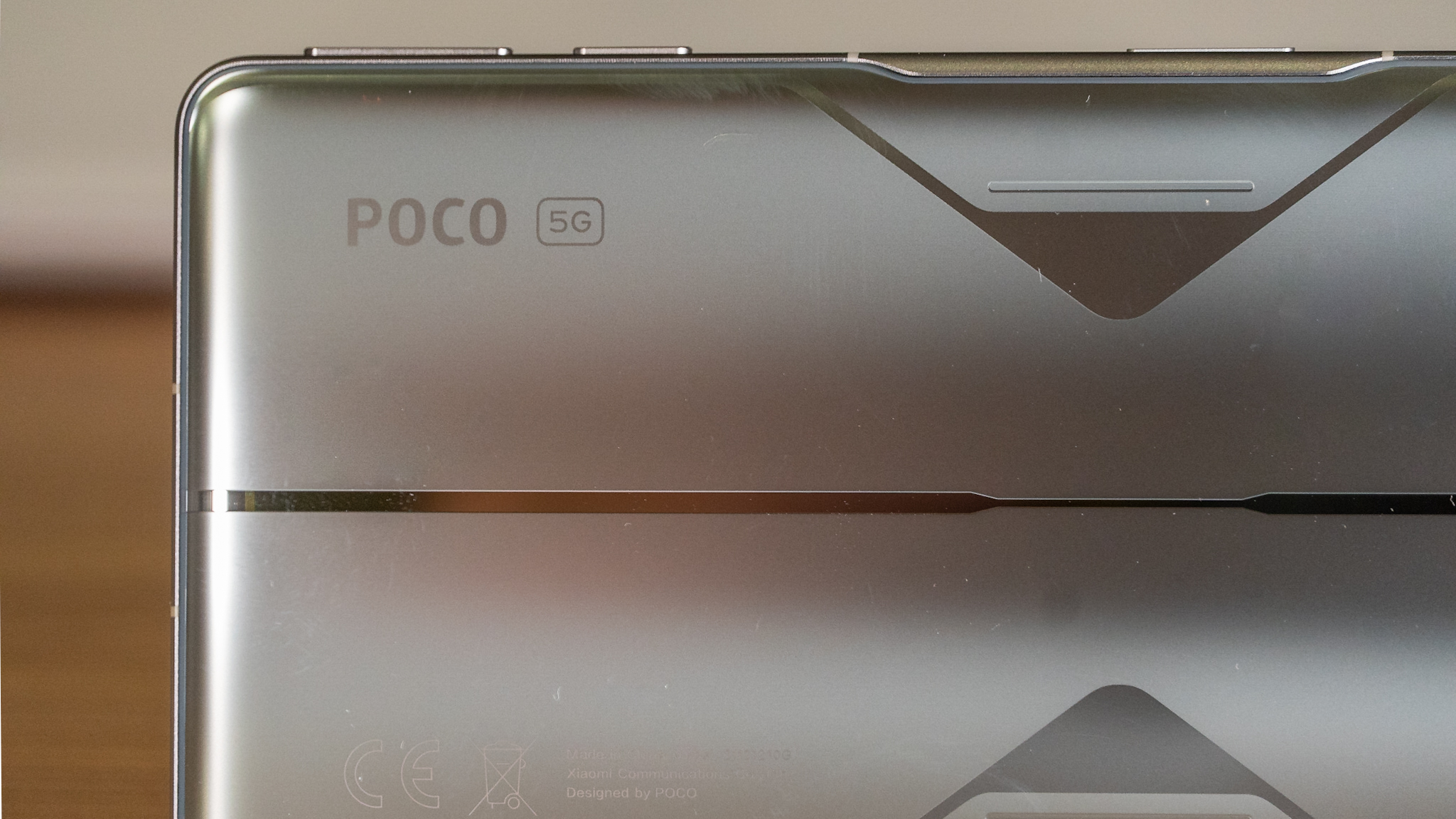
Behind, the back cover is made of plastic. We would have preferred metal or glass, but the great impression of solidity remains. Aesthetically, there are different lines and colours to create dynamism. The more aggressive version is the yellow one, while the gray one we tested has a more “calm” look, while maintaining modern and youthful design choices. One very nice detail (we didn’t notice initially) was that of the flash in the form of a lightning bolt near the camera. A really neat touch!
There is also a touch area, roughly three-quarters of the way up. You can customise it, so you get specific actions when you tap two or three times (they are two different commands). For example, you can use this tool to take a screenshot on the fly, or activate Google Assistant. Or you can turn it off if you don't care.
The camera module has three lenses and protrudes a lot from the body of the smartphone. Enough to make it wobbly when placed on a table. The problem disappears using the transparent silicone case, included in the box.
Speaking of which, it's a fairly cheap case (hard not to use a cheap case , thanks for noticing), one of the very cheap ones you find many times in the box - and which tend to yellow pretty quickly. Not usually a problem, but the Poco F4 GT's design is very distinctive, with triggers popping out and the additional microphone. Finding an alternative case, therefore, might be more difficult than normal, and we would have liked to have found a better quality one in the box.
There is no IP certification, so beware of water and humidity.
Overall, the Poco F4 GT has a solid design, with some appreciable extra details but not very inspired and sometimes coarse. It works, but the lack of IP68 certification clashes a bit on a product that would like to be a “flagship”.
Screen

The Poco F4 GT's screen is nothing new. It is the same type of screen that we have already seen on other Xiaomi and Redmi models, and it is an excellent screen, both for gaming and for multimedia consumption. The resolution, 1080x2400 pixels, is enough to do everything and reproduce sharp and precise images. It would’ve been nicer to have more than 394ppi but it’s definitely something that didn’t affect our daily use.
The refresh-rate on the device is 120 Hz, which guarantees great fluidity at all times. More importantly, though, the refresh rate changes dynamically: the phone raises it or lowers it, always ensuring the right balance between energy saving and performance. We don't know how low the Poco F4 GT can go down - but we do know that some competitors go as low as 1 Hz to save battery as much as possible. If you want to set it manually, you can choose between 60 and 120 Hz too.
Being an OLED screen, we find excellent contrasts. The colours are quite bright, probably too much with the default settings. However, there are many settings to obtain a different result: in our case, we found that the setting "Original colour" is the best, because it generates more natural colours. But above all we like the great freedom of customisation with the screen settings.
The brightness management, on the other hand, could be better. We have noticed that the Poco F4 GT often displays a screen that is too dark to be read, even if ambient light is abundant. When this happens, the only solution we have found is to manually intervene to adjust this parameter. Sometimes it was quite necessary to disable automatic brightness.
It still remains an excellent screen, even for enjoying movies and TV series thanks to HDR10 compatibility. If you use your smartphone to watch Netflix, Poco F4 GT can guarantee an excellent experience.
- Best OSN TV shows and movies: what to watch this month
- Best Starz Play TV shows and movies: what to watch this month
- Best Apple TV UAE shows: great series worth binge-watching on Apple TV Plus
Camera
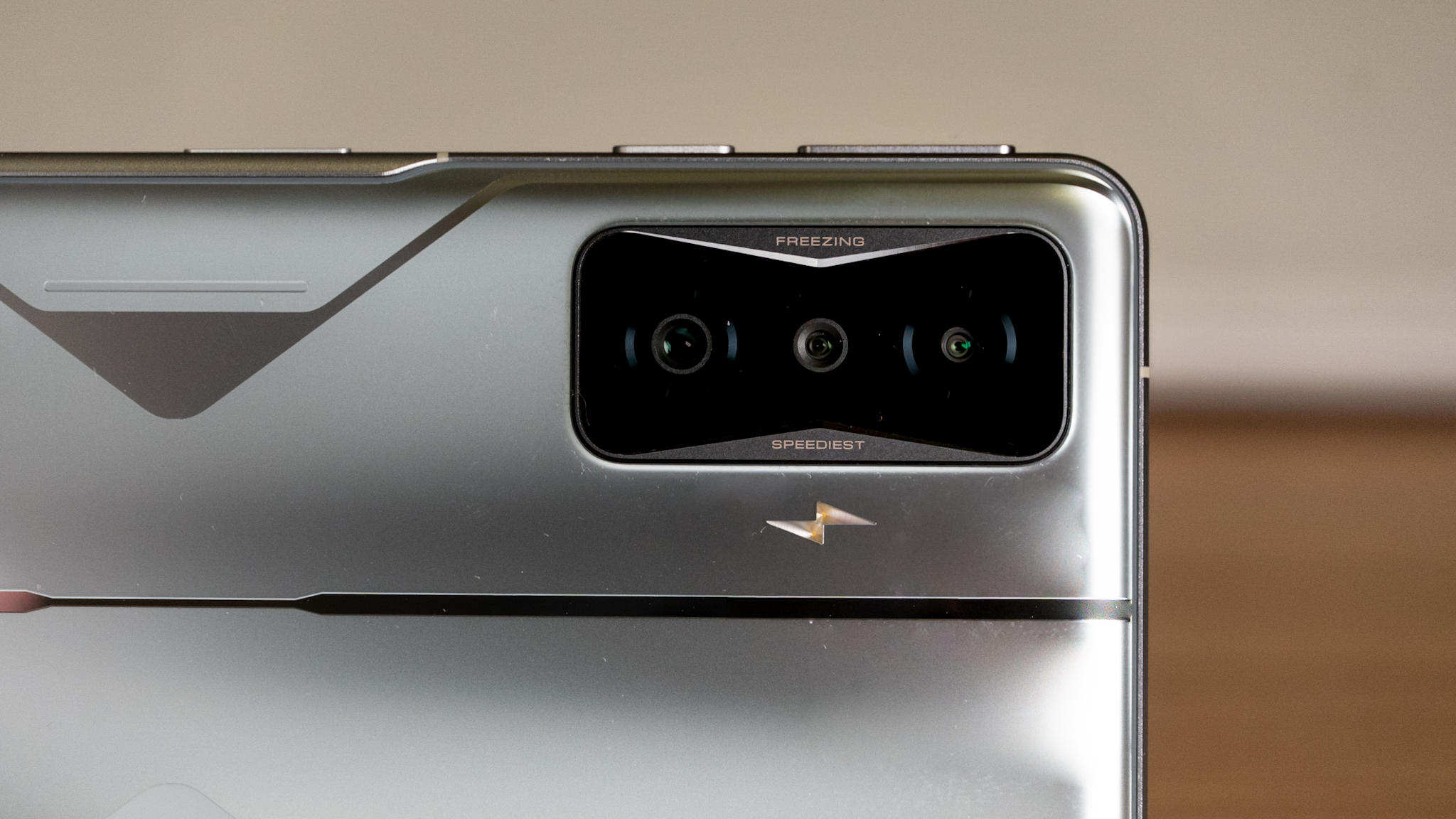
The one pleace the Poco F4 GT does not shine is its camera. The main sensor is a 64MP Sony IMX686. It is not a top of the range, and we find it on other gaming smartphones such as Asus Rog Phone 5 , but also on mid-range models such as Oppo Reno 5. On paper it is a decent camera, and the results we have obtained are "so-so ". The Poco F4 Pro can take decent photos, and if you’re looking to push the limits of a smartphone camera, this isn’ the phone for you.
The colours are quite accurate, and there is an acceptable level of detail, at least when the scene is well lit. You can't zoom in that much, but photos will do just fine for small print or social media posting. The other two cameras, a 2MP macro and an 8MP ultrawide, leave a lot to be desired and you probably won't want to use them, unless there is an immediate need for the same.
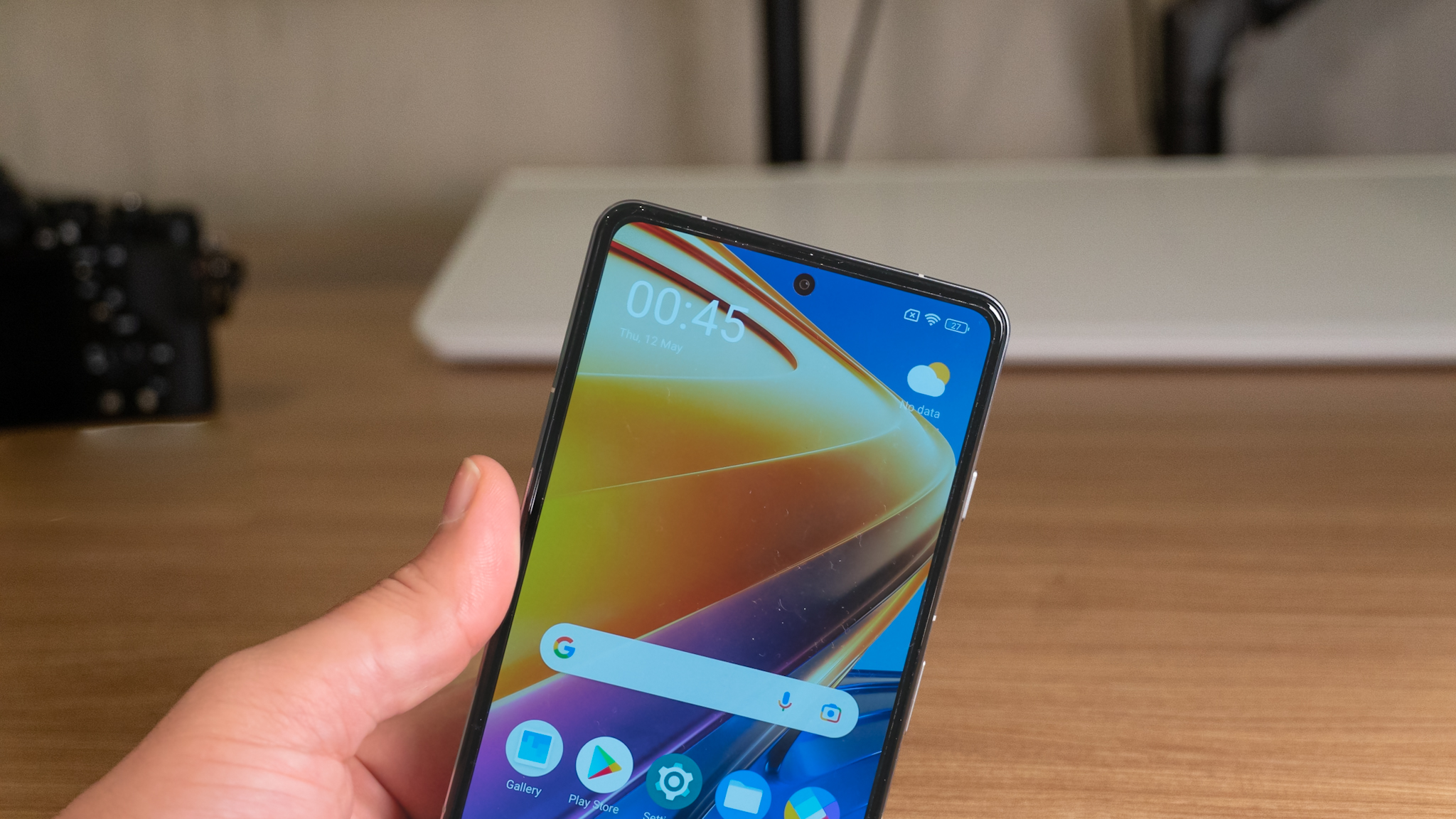
The 20 MP front camera is great for taking photos and videos, handles contrast and details very well, but tends to generate slightly dull colours. Nothing that cannot be solved with a filter or with some subsequent modifications.
As for videos, the Poco F4 GT can record up to 4K / 60FPS. The video quality we got is pretty good, more than adequate for a birthday party or something. If you are a videomaker, however, and you are interested in making videos of higher quality, then it is not ideal. It is also possible to record videos in Macro mode, but in this case the resolution is limited to 720p.
Speaking of changes, the Camera app is quite packed with many options for those who want to give free rein to creativity. The same goes for the Gallery app, which includes many tools for editing photos; noteworthy, in particular, is the possibility of replacing the sky and changing the tone of the image in an instant.
Performance
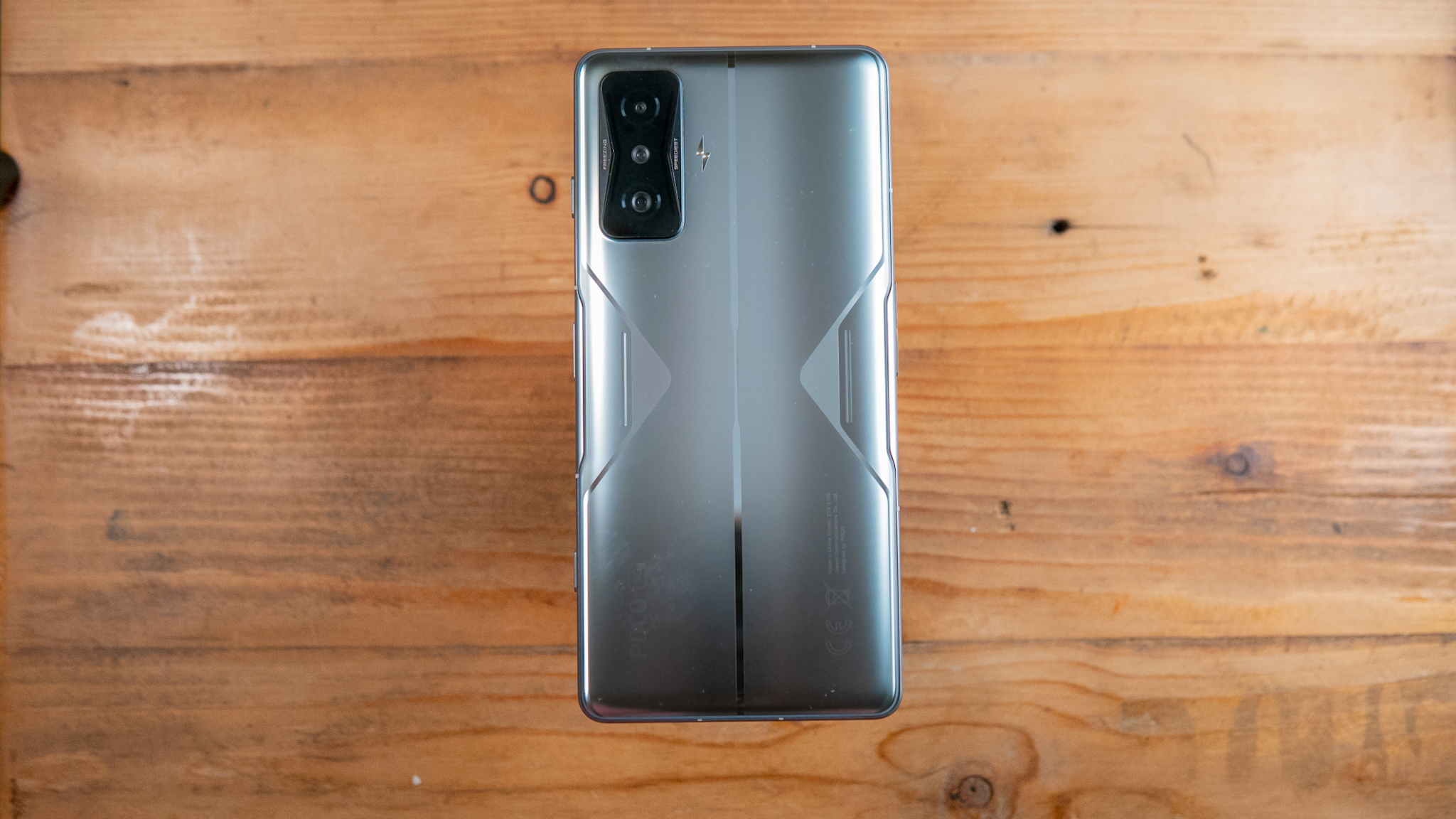
There isn't much to say about a smartphone with a Qualcomm Snapdragon 8 Gen 1 processor and 12GB of RAM in 2022. It may not be the most powerful phone out there, but it is certainly among the most powerful of all.
For a start you can play whatever your favourite game is. The high performance of the processor, together with the frequency of the screen, guarantee a high levell gaming experience.
But it's not just about video games. The power of Poco F4 GT makes it an all-round valid smartphone: it opens apps quickly and is snappy even in the most demanding multitasking.
You can check the agenda, check out the latest news and then switch to the camera in the blink of an eye, without the slightest sign of slowing down.
Poco F4 GT scored 3,453 points in the Geekbench 5 multi-core test, and 1,214 in the single core test.
What is absolutely interesting, in terms of performance, is the fact that the Poco F4 GT has a new generation dissipation system, with a huge vapour chamber and a liquid system that allows you to keep the phone cool (never above the 40 degrees) even for long hard gaming sessions hours or more. And all without losing performance, that is, without incurring a reduction in performance due to thermal throttling.
Battery
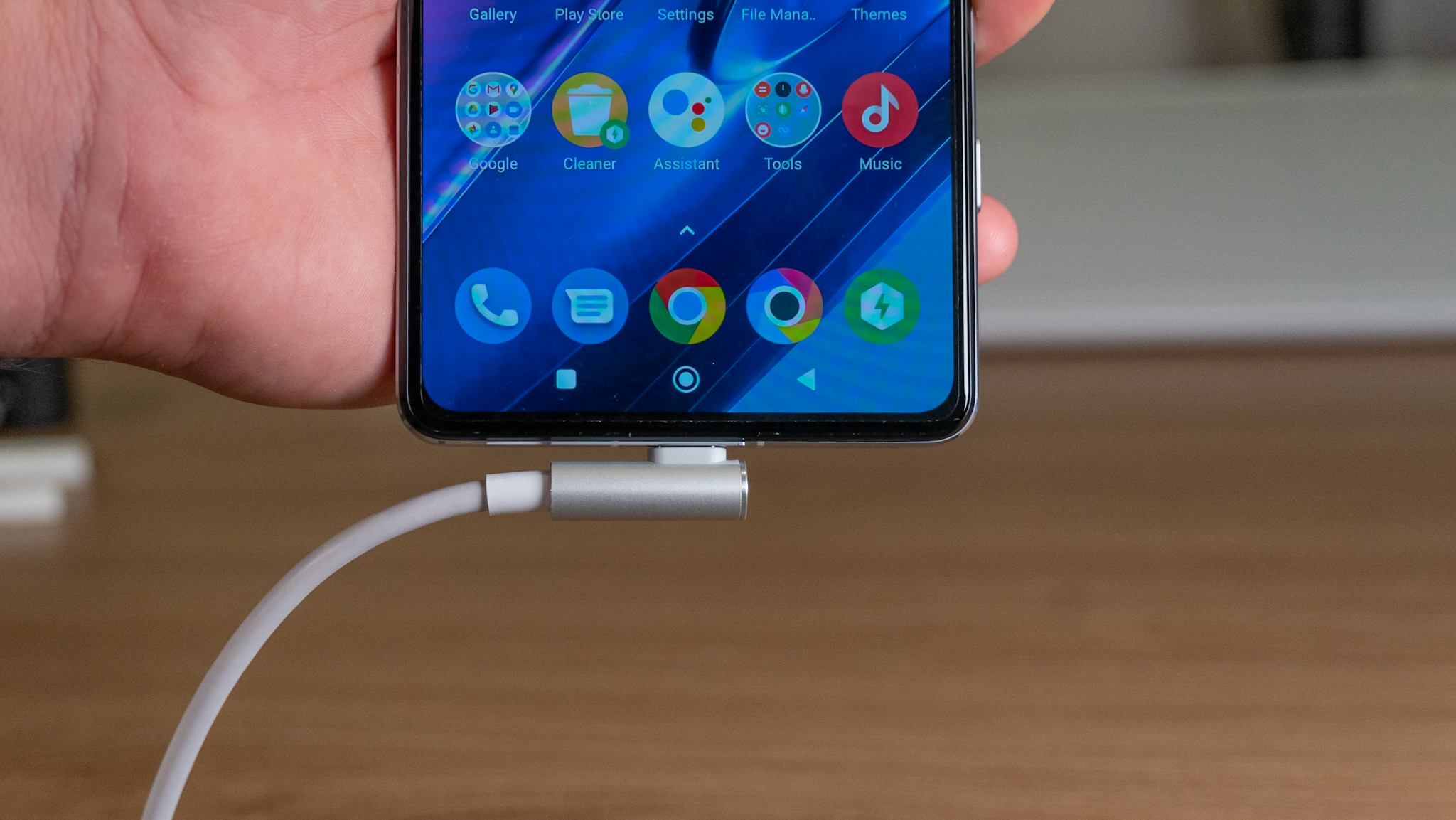
The Poco F4 Pro is a smartphone without glory or infamy when it comes to battery-life. In a medium to medium-high usage scenario, you can expect it to last all day. But if you have something to do in the evening, perhaps it is advisable to recharge it during the day. On the one hand it is because the processor consumes a lot (by now we know the Snapdragon 8 Gen 1) and, on the other hand, Poco has installed a battery of “only” 4,700 mAh. Two batteries, to be precise, each of 2,350 mAh.
During the trial period, we arrived in the evening around 11pm (disconnecting it around 6am), with a charge remaining between 15% and 25%. This wouldn't be bad, but there were days when around 8pm it needed to be recharged. It is video games that consume the power mainly and we certainly know that the latest Qualcomm processor gives some headaches to this point of view. However, among the best smartphones we have models that last longer even with a scenario of intense use. It must be said, however, that at the price of this Poco F4 Pro the result is truly remarkable.
While the battery-life of the device might not be ideal for a ‘gaming phone’, the Poco F4 GT makes up for it big with a 120 watt charger included in the box. With this charger, you get back on track in no time: in theory, it can charge your smartphone from 0 to 100% in 17 minutes, but you will rarely find yourself in such conditions. More likely, with 10 minutes available, you can recharge enough to meet your needs, and you can end the evening worry-free. If you plug in the cable and you're playing games at the same time, you'll have the Poco F4 GT fully charged in less than half an hour, which is pretty impressive.
Speaking of the charger, there is another small detail that we really liked: the cable ends in an L-shape.This allows you to use the smartphone for playing games or watching videos, holding it in your hand and without the cable becoming annoying. . It may seem like a small detail, but those who have used their smartphone with the cable attached can guess how useful this feature is.
Is it worth it?
The Poco F4 GT offers excellent value for money. In some respects there is certainly room for improvement, but at this price it is certainly one of the best purchases possible.
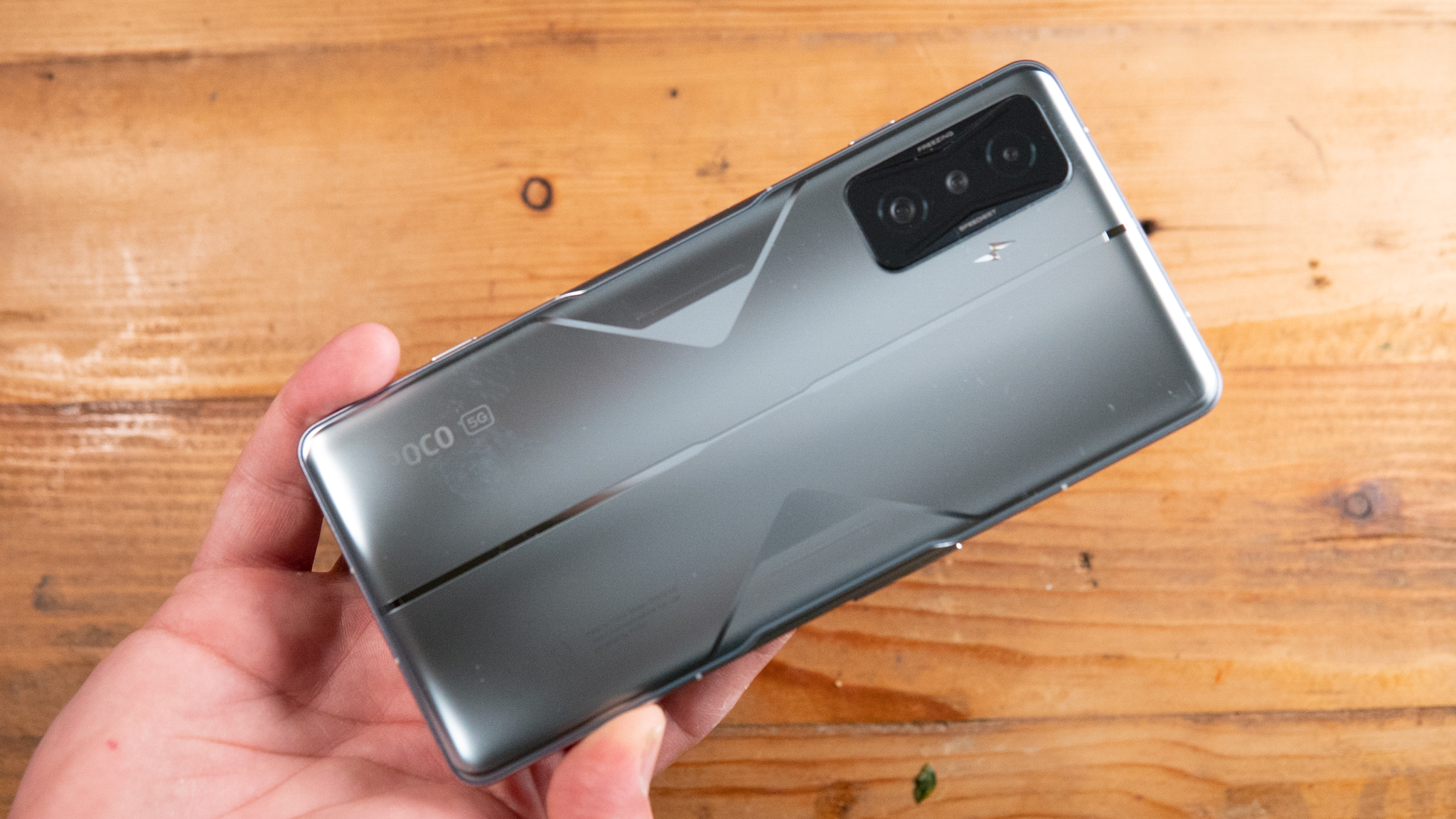
Buy it if ...
You want the best price / performance ratio
The Poco F4 GT has top-of-the-line specs, a fantastic screen and analog triggers. It's blazing fast and it's excellent to play, all at a very competitive price.
Play a lot with your smartphone
In addition to the processor and screen, Poco has equipped the Poco F4 GT with some details designed specifically for gaming. The analog triggers work great, and the L-shaped cable allows you to play for hours without worrying about the battery.
You are interested in fast charging
The 120-watt charger included in the box can get the Poco F4 GT back to 100% in 17 minutes, if you're starting from scratch. It only takes a few minutes to be ready to go again, at any moment.
Don't buy it if ...
You care about photography
Poco F4 GT isn't a champion when it comes to photo quality. The main camera is ok, but nothing memorable. And, probably, you'll soon forget about the secondary sensors.
You want a battery that lasts a long time
Fast charging is a great thing, but the fact is that the 4,700mAh Poco F4 GT battery will last a day at best, but it might not even make it to dinner time on busy days.
You have a lower budget
To be precise, AED 2249 isn’t cheap. The Poco F4 GT doesn't cost that much, for the phone that it is. But if you are looking for a less expensive mid-range model, there are great smartphones in under AED 2000 too.

Daanesh Kalyaniwalla is the Executive Editor at Techradar Middle East and is a consumer tech journalist, based in the UAE, who has spent almost a decade in the industry covering events, writing reviews and creating a whole load of content relating to everything from smartphones and laptops, to headphones and tablets, to air purifiers and robot vacuums and so much more. If you're looking to figure out what product is perfect for you, he's probably going to be the one to set you on the right path.